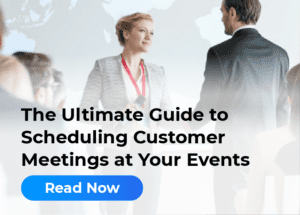Interacting with customers on social media at events is an integral part of marketing. As consumers use social media for their informational needs, numerous companies have found it important to use these channels to reach out to their customers through these channels on the exhibitor’s floor.
Events have come a long way from celebrity endorsements. Attendees now search for authentic experiences on the exhibitor’s floor and this is where the power of influence comes into play. Companies have now uncovered the potential of appealing to influencers. Undoubtedly, engaging with influencers is a great way to drive value to events, but has become expensive. And this brings us to micro-influencers.
What micro-influencers bring to the table
Micro-influencers, as opposed to regular influencers that have a high-follower count, are those opinion leaders that drive consistent, relevant conversation with their limited followers. They have a more hyper-targeted audience that they engage with on a regular basis to build hype and drive conversations.
An article by Adweek states that micro-influencers are 60% more effective than influencers at engaging with audiences. Moreover, they often find it easier to develop a close rapport with their followers since they have a smaller base of followers. In the next section, we take you through a few ways in which you can engage influencers at trade shows.
Engaging and leveraging micro-influencers
The first step in setting your influencer plan in motion is to define objectives. Understanding what you need to achieve from the campaign can give you a clear picture of the roadmap. This can also tell you what you need to know about your target audience and how to plan your strategy to engage them sufficiently.
Identifying the target audience entails more than just knowing who you are targeting. It involves understanding how they behave, what channels they use, what sort of content they look for and putting together a plan to create modules that resonate with them.
Once you have your objectives on paper and identified the target audience, the next step is to find influencers that have the right reach and match your event. The ideal way to identify micro-influencers is by taking a closer look at your following. Characteristically, the right micro-influencers will have a comparatively smaller following, engage with your content, frequent common events and have an authentic and dedicated following.
Using social-listening skills will help you clearly identify their target audiences, how they engage with them, and the tone of content they create. Engagement is an important factor to consider at this point. The biggest indicator is of how well their target audiences engage with them. A high number of likes and shares is indicative of healthy engagement as opposed to inconsistent and low-levels of engagement.
Once the right micro-influencers have been chosen, it is important to explain the objectives of the event and plan of action to achieve them. An effective micro-influencer strategy is a collaboration that is beneficial to both parties involved. It should genuinely offer the influencer growth and support over a long period of time and should help the company reach out to their target audiences effectively.
The action plan starts when you are two to three weeks away from the event. Micro-influencers need to start creating a pre-event buzz to get their audiences excited about the event. This can give the audience a glimpse of what to expect and build excitement. This needs to be done on a consistent and periodical basis to have the desired effect.
Similarly, at the event, it is important to maximize attendance and engagement. Micro-influencers can use their channels to maintain communication with the audience, drive traffic to your booth or sessions, and help your brand reach out to wider audiences. Transparency is a requirement at this stage. Remember that influencers need to disclose whenever paid-for-promotion initiatives are involved.
At this point, it is extremely important to keep your finger on the pulse of your event. Active social-listening can give you great insights on whether the initiative is working on not. This is also a great way to gain crucial feedback in an authentic format and make corrective steps as and when necessary.
A micro-influencer initiative does not end after the event concludes. A post-event follow-up process is vital to the event marketing strategy. In order to close the loop, event marketers need to collect feedback from micro-influencers and create a venue for sustained engagement like a post-event guest blog about the experience. This ensures a certain boost in engagement even after the event concludes.
Micro-influencers are gaining importance in the present realm stepping up sales efforts of events. The framework discussed above is sure to help you gain the right influencers and maximize engagement at events and trade shows.
Jifflenow is proud to be the Platinum sponsors of the Event ROI Summit, the first-of-its-kind online summit dedicated to event organizers and professionals. Join us on the 13th of June as we take you through some of the best practices to maximize event ROI.



